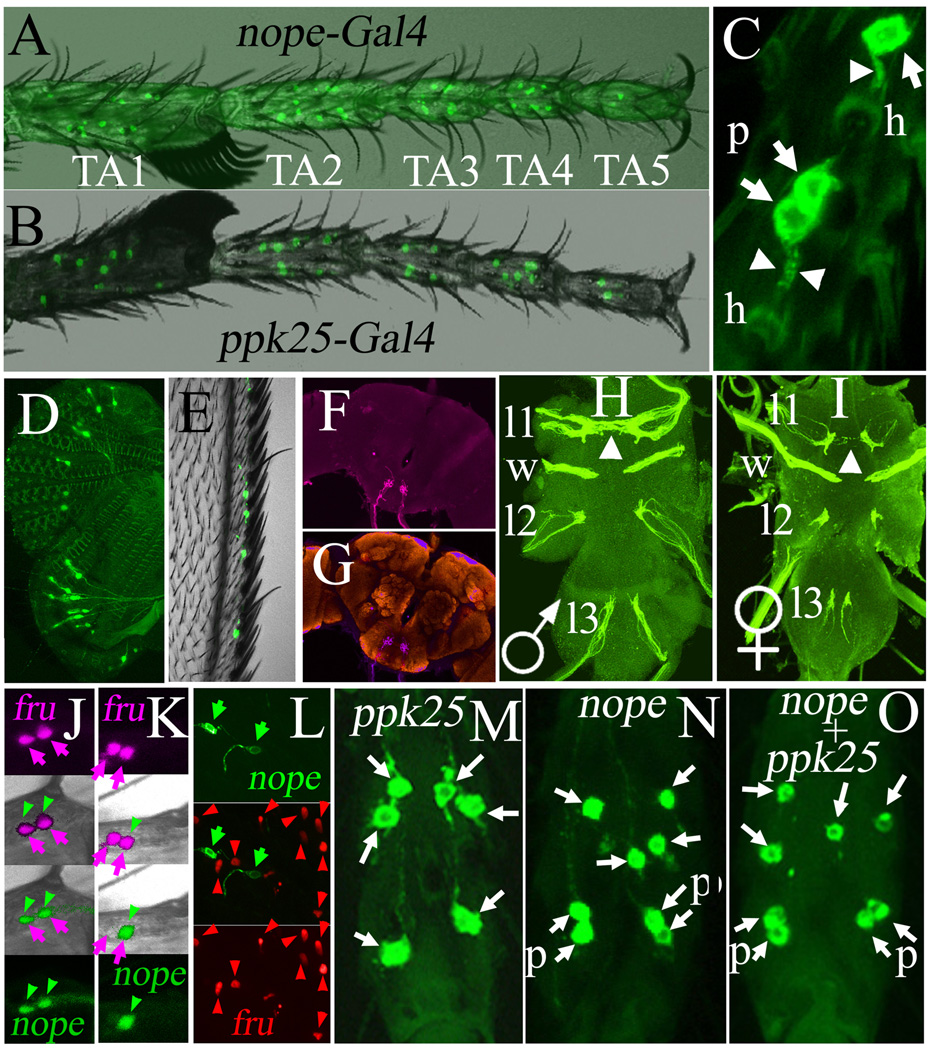Figure 4. The nope-Gal4 transgene is expressed specifically in gustatory neurons that also express fru, including all gustatory neurons that express ppk25-Gal4.
GFP fluorescence was analyzed in males expressing mCD8-GFP under control of ppk25-Gal4, nope-Gal4 or both drivers as indicated.
A, nope-Gal4 and B, ppk25-Gal4 are expressed in very similar patterns in gustatory neurons in the front legs of males (only the tarsi are shown, TA1-TA5 indicate tarsal segments 1–5).
C, higher magnification image of three gustatory neurons expressing mCD8-GFP under control of nope-Gal4 (arrows). Each neuron has a single sensory dendrite (arrowhead) that can be traced to the base of a taste hair (h). In the case of two neighboring neurons (labeled “p” for paired), the two dendrites run in parallel towards the base of the same taste hair.
D, E, expression of UAS-mCD8-GFP under control of nope-Gal4 shows gustatory neurons in the labellum (D) and wings (E, superimposed to bright-field image).
F, G, whole-brain staining of male expressing mCD8-GFP under control of nope-Gal4 using anti-GFP shows axonal projections of taste neurons onto the subesophageal ganglion. In G, anti-GFP staining is superimposed to staining with nc82, a monoclonal antibody that allows visualization of brain structures {Laissue, 1999 #575}.
H and I, whole mount staining of the ventral nerve chord with anti-GFP shows the axonal projections labeled by UAS-mCD8-GFP under control of nope-Gal4 in males and females, respectively. Gustatory neurons on all three pairs of legs (l1, l2, l3) and on the wings (w) project to specific thoracic ganglia. Projections from the front legs onto the first thoracic ganglia cross the midline much more frequently in males than females (arrowheads).
J, K, imaging of taste neurons on the front legs of males expressing two nuclear fluorescent proteins shows that all nope-Gal4 expressing neurons express fru; expression of nuclear GFP is controlled by nope-Gal4 (green arrowheads), and expression of nuclear tdTomato is directed by fru-LexA (Mellert et al., 2009) (blue arrows). While fru is expressed in two gustatory neurons per taste hair (Mellert et al., 2009), nope-Gal4 is expressed in both fru -expressing neurons in some hairs (J), or only one in others (K). L, double-labeling of the neurons on the labellum with membrane-bound mCD8GFP (green) under control of nope-Gal4, and nuclear tdTomato (red) under control of fru-LexA (Mellert et al., 2009). In contrast to the male front legs, expression of the two drivers on the labellum does not overlap.
M–O, Comparison of the number of taste neurons expressing mCD8-GFP under control of ppk25-Gal4 (L), nope-Gal4 (M), or both transgenes (N) on the third tarsal segment of male front legs (“p” indicates a pair of mCD8-GFP-expressing neurons associated with a single taste hair).

